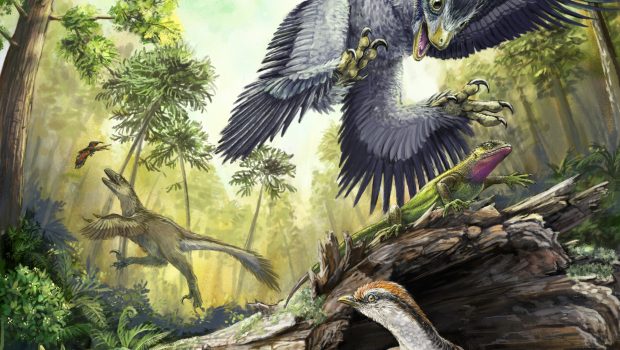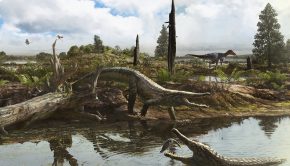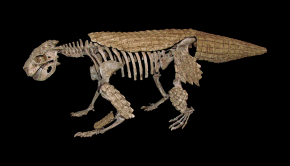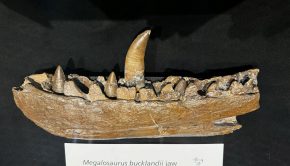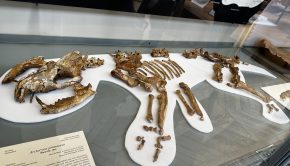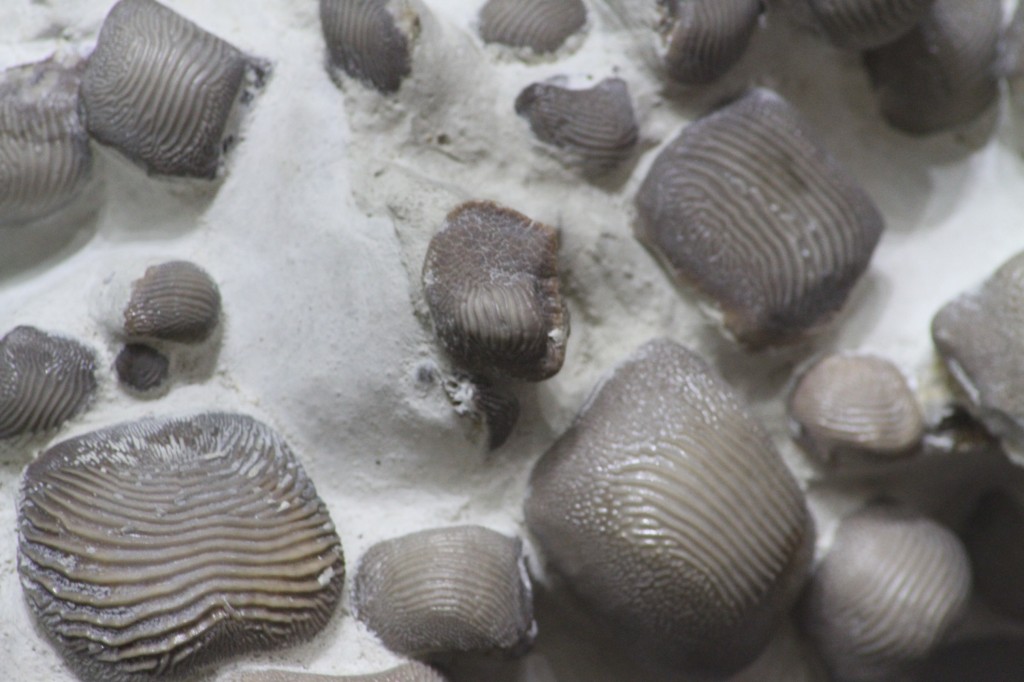Abrupt extinction of toothed bird-like dinosaurs at the end of the Cretaceous
The extinction of non-avian dinosaurs at the end of the Cretaceous has always been a discussion favourite amongst vertebrate palaeontologists. The traditional view has been that a meteor hit the earth near modern day Mexico (the Chicxulub crater), wreaking havoc on the world for many years and causing the sudden and mass extinction of a significant number of animals both on land and in the water. Conversely, more recently evidence has suggested that non-avian dinosaurs were already in decline at the end of the Cretaceous, and the meteor was just the last straw. In fact, a paper published in PNAS earlier this week suggested that dinosaurs were in decline for as much as 50 million years before the meteor hit, which wasn’t at all expected.
However as is often the case in science, we should never expect something to be considered the final word on a topic. Today, a new study lead by Derek Larson (PhD candidate at the University of Toronto and now Assistant Curator at the Philip J. Currie Dinosaur Museum) published in Current Biology says quite the opposite. Since complete body fossils and skeletons are uncommon, they looked at over 3000 teeth of small maniraptoran theropod dinosaurs at the end of the Cretaceous as a measurement for disparity and ecological stability. Maniraptoran theropods are the Velociraptor-esque bird-like dinosaurs, including some avians with teeth, unlike modern birds. They found that these animals showed no decrease in disparity or ecological stability throughout the Late Cretaceous, leading up to the extinction.
Derek Larson expanded on his research: “This paper looks at two main aspects of the extinction of small bird-like (maniraptoran) dinosaurs at the end of the Cretaceous. First, we examined the variation, or disparity, of the teeth of these animals over the last 18 million years of the Cretaceous in North America. We did this to address the question of whether or not this group of dinosaurs was in decline before the end-Cretaceous extinction. Our results (in 4 time bins on the continent scale and in 7 time bins in southern Alberta and Montana) show there is no decline in disparity over this time interval, indicating that the extinction at the end of the Cretaceous was sudden. However, even with disparity remaining unchanged, there is evidence of some changes. The size of two groups, troodontids and Richardoestesia increase in the Upper Campanian-Lower Maastrichtian Horseshoe Canyon Formation of Alberta, while the size of dromaeosaurid teeth are generally larger throughout the series after a low in the Santonian Milk River Formation. These shifts in size, though, are not related to any corresponding shifts in disparity.
The second part of the paper examined the question of why this sudden mass extinction might have occurred in toothed maniraptoran dinosaurs, including toothed birds, but not in their close relatives the ancestors of modern birds that survived the mass extinction. In this paper, we put forward the hypothesis that the ability of some birds to access seeds as a food resource played a role in their ability to survive the mass extinction. In the years or decades after the asteroid impact, debris in the atmosphere would have restricted the photosynthesis and growth of plants, having lasting severe consequences on the ecosystem that would be slow to correct. During the collapse of the parts of the ecosystem that depend on photosynthesis, banked seeds from before the asteroid impact would have been one of the few reliable and abundant resources available. Animals without crushing teeth, including the toothed maniraptorans, would be unable to access this resource, but beaked birds probably could. Our analysis of the diets of modern birds predict that the ancestor of all modern birds, and most of the bird lineages that crossed the end-Cretaceous boundary, could have taken at least some seeds, and likely would have been able to access this resource, allowing their descendants to rapidly diversify when conditions improved, leading to modern birds.”
Although this study only looked at bird-like maniraptoran theropods and not the entire dinosaurian group, this shows that at least some groups of dinosaurs were still succeeding even in the final 20 million years of the Cretaceous. In fact, some of the groups studied were still getting bigger, which is not indicative of a group in decline. It also helps to address the idea of how the lineage leading to modern birds survived the extinction and other groups did not. It was obviously not related to flight since pterosaurs and toothed flying birds didn’t survive, and this gives us an idea about why they didn’t die off. Seeds are a difficult food source to survive on, and we can see the tooth morphology in modern animals and throughout the fossil record that corresponds with eating primarily seeds, and the serrated, “wounding teeth” of Troodon and it’s relatives are not ideal. It seems that modern birds may have their beaks to thank for making it through the meteor impact.
Another point that can be made from this paper is that it shows that not only beautiful complete skeletons are important and useful. Without the collection of over 3000 small, isolated teeth, this study would not have been possible. Isolated, incomplete material in large quantities can help to solve major palaeontological questions, and arguably more important questions than the description of another species of dinosaur.
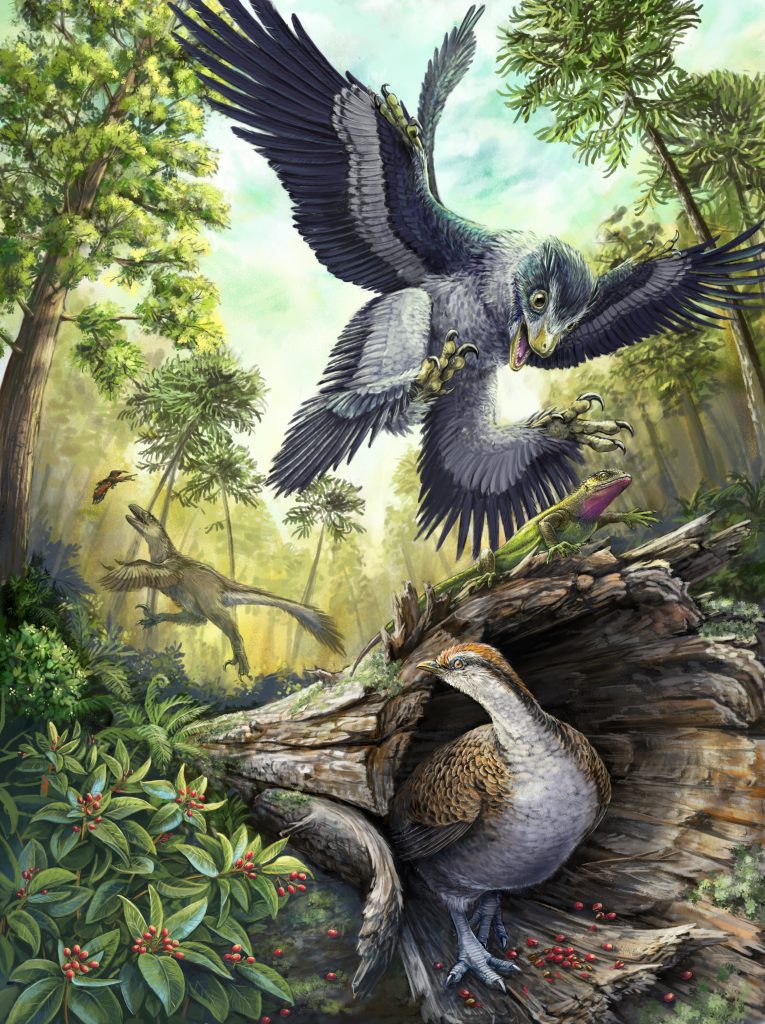
A number of bird-like dinosaurs reconstructed in their environment in the Hell Creek Formation at the end of the Cretaceous. Middle ground and background: two different dromaeosaurid species hunting vertebrate prey (a lizard and a toothed bird). Foreground: hypothetical toothless bird closely related to the earliest modern birds. Image credit: Danielle Dufault.
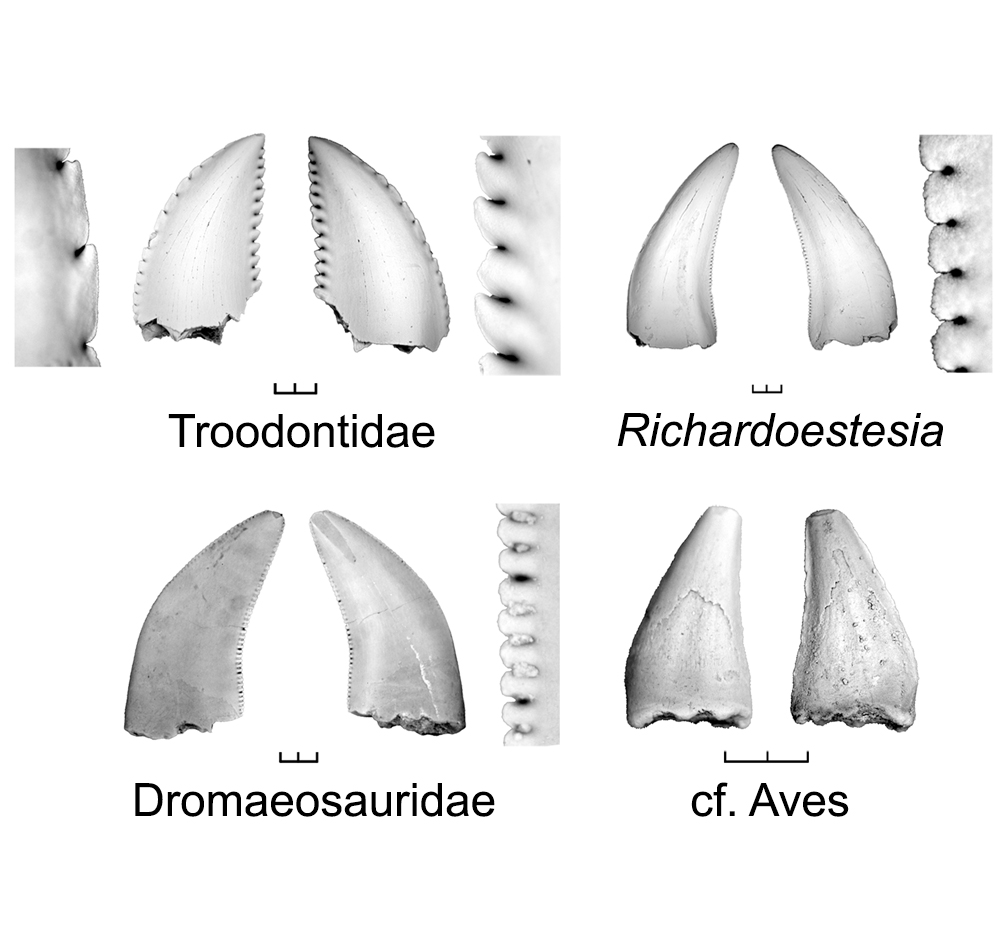
This image depicts representative teeth from the four groups of bird-like dinosaurs (including toothed birds) analyzed in this study, with enlarged images of tooth serrations. Scale = 1 mm. Photo credit: Don Brinkman. Modified from Larson et al. 2010. Can. J. Earth Sci. 47: 1159-1181.
Reference:

